Decorative moldings
Post from EditorialsApplied to the walls or ceiling, moldings offer great possibilities for customization of environments, giving a touch of elegance and originality.
The decorative moldings
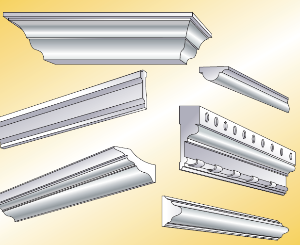 Moldings applied to the walls or ceiling create pretty decorative patterns, without requiring complicated or particularly invasive interventions.
Moldings applied to the walls or ceiling create pretty decorative patterns, without requiring complicated or particularly invasive interventions.
It is available commercially in a wide variety of shapes, sizes and materials. The classic piping variously shaped adding complete elements as small niches, medallions and other ornaments.
The moldings are made with special synthetic resins, mixtures of gypsum and also with hardwoods.
Those plaster are usually used to make ornaments, rosettes and decorative panels on the ceiling or walls. Are also available moldings of plastic material, which are used to decorate furniture of the conventional type; the market can finally find moldings curves that allow to form circles, curves, ovals and arches.
The plaster moldings or plastic simulate with great realism, the presence of architectural elements, with classic decorations such as acanthus leaves, coves and more.
These structures are simple to apply, which can be just as easily removed, without damaging the walls and without therefore constitute architectural elements with constraints.
The moldings can adapt to any environment and furniture: perfect for rooms with a classic style, they can easily enrich personality living spaces with a modern character, through the creation of a nice contrast in styles.
The cuts
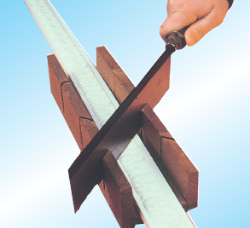 To cut the moldings you use a miter box.
To cut the moldings you use a miter box.
It is a simple accessory that fits the molding to be cut and which allows to drive the saw blade (using a saw with reinforced back).
However, you can buy moldings already cut to size by the supplier, but you must be very sure of the measures.
The application
The moldings are fixed on a surface properly prepared. You have to clean the walls, cover any holes with wall stucco and then sand it.
Do not place the molding until the surface will not be perfectly level: otherwise, it will risk of inaccuracies immediately perceptible to the eye.
Mark the exact position of the moldings on the surface to be decorated with a spirit level, the line and the square ruler; once applied, the molding can no longer be moved.
Application with adhesive or nails
For decorations in plaster and resin, use the adhesive according to the manufacturer.
If the molding is heavy or widespread, secure it temporarily with very thin nails (so-called steel needles without a head) that will be removed when the adhesive has hardened.
Alternatively, not to chip the surface you can put the lengths of tacks very thin (are fine needles) along the line of application, planting them on the wall and pressing on the molding.
When applying a ceiling rose or wall, press it and apply two strips of paper that support it during the setting of the adhesive. Once the structure is thoroughly fixed on the ceiling or wall, you can remove the tape without any signs on the rose or on the decorative molding.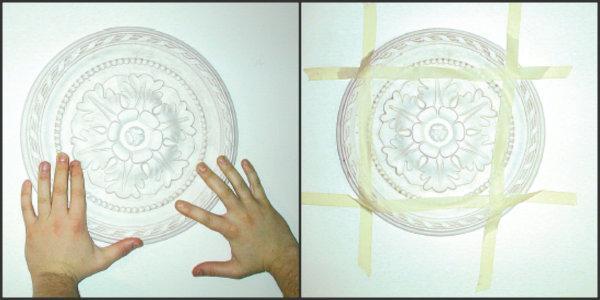
Frames with borders
In a very large room with bare walls, you can create large panels on the walls using more moldings, decorating some areas as opposed to others.
You can upholster the part enclosed by moldings with paper, fabric of various kinds or cork and paint the exterior with coordinated or contrasting colors.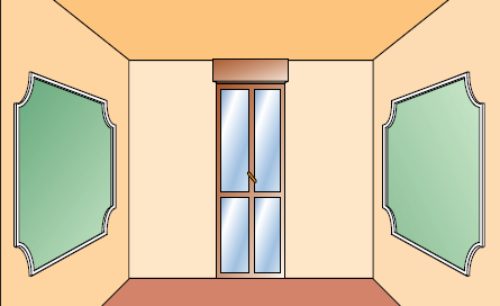
Frames with borders in turn can accommodate paintings with a light and clear frame, to avoid an excess of decorative elements, creating an elegant and highly personalized rooms.
It is advisable, however, to avoid the application of moldings to the walls of small rooms or very rich furniture and furnishings: it would be too chaotic surroundings and with an excess of elements close to each other.
The wood borders
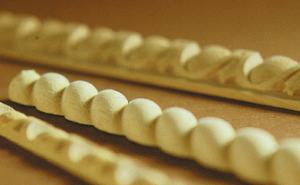 Even the wooden borders, such as moldings, are available in many forms and can have different dimensions.
Even the wooden borders, such as moldings, are available in many forms and can have different dimensions.
Particularly interesting are those twisted and shaped, that allow to create decorative compositions very sophisticated and adaptable to different contexts.
The wood trims are used primarily to produce finishes on beading or panels but also to protect the edges, and create a frame to the wallpaper that do not reach the ceiling. They are cut with the cassette or frame cutter with hacksaw (the very thin type) and apply with specific adhesives or nails with thin steel.
79163 REGISTERED USERS










